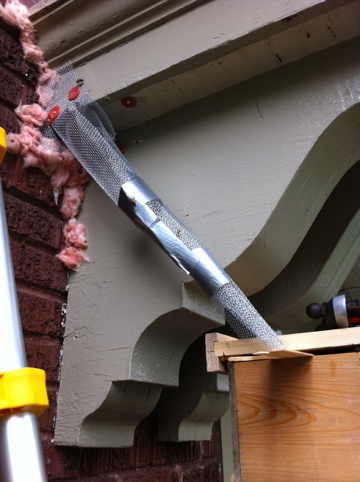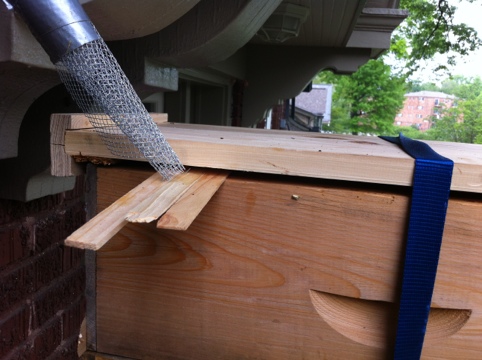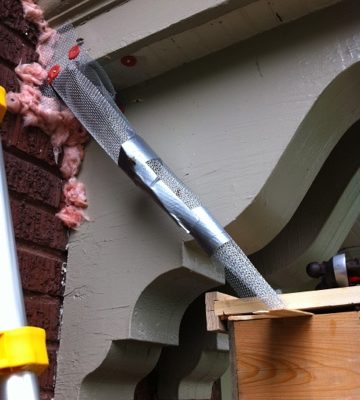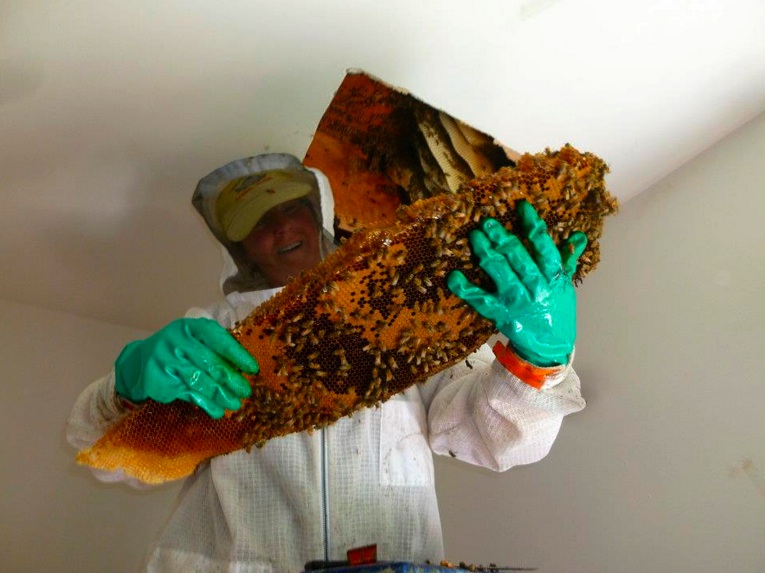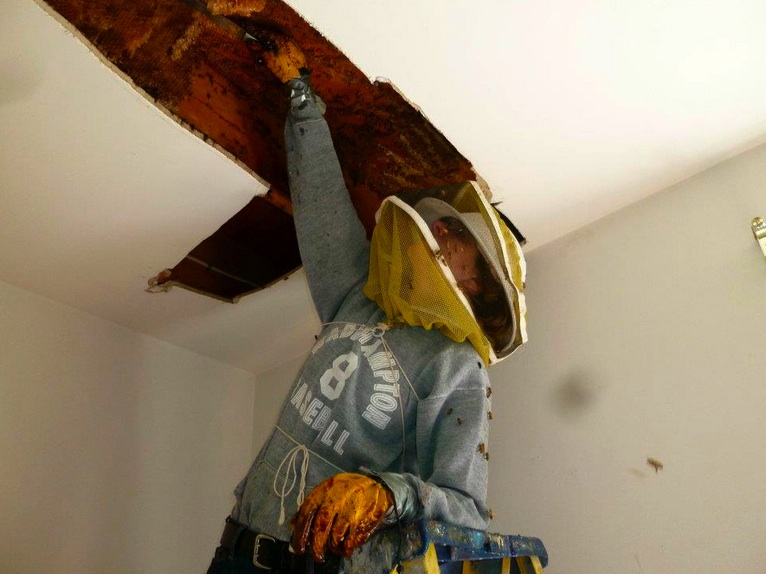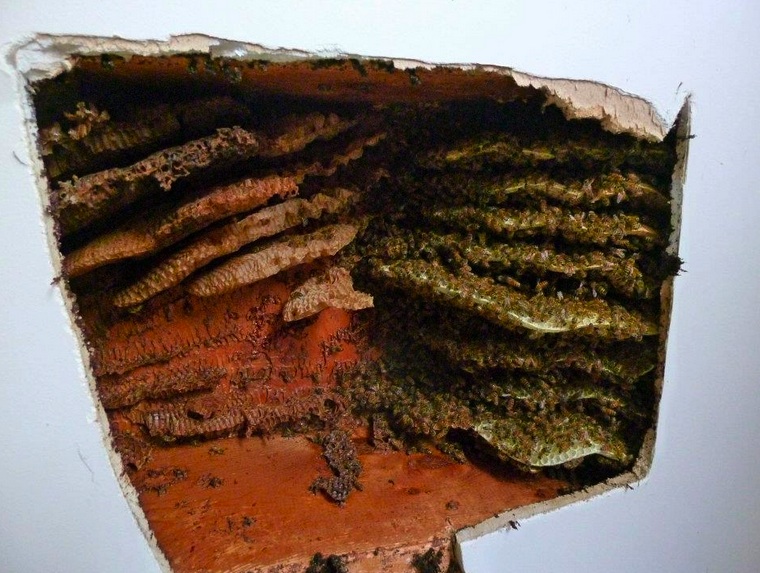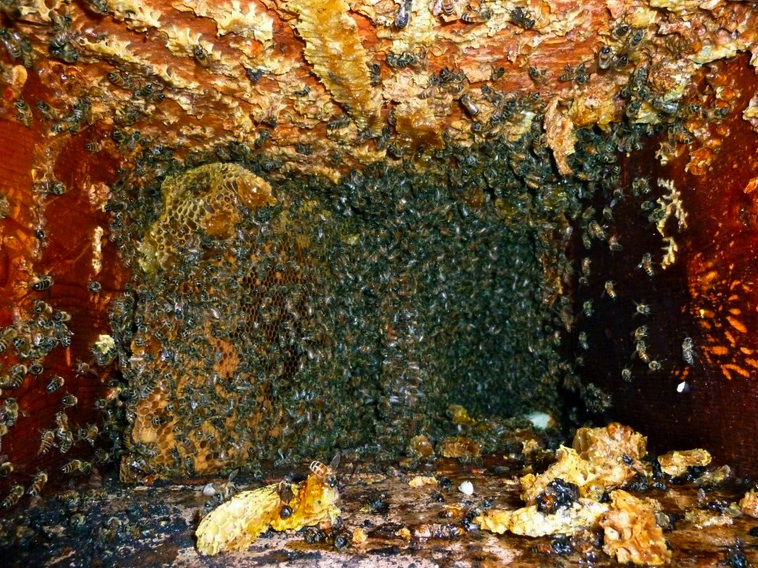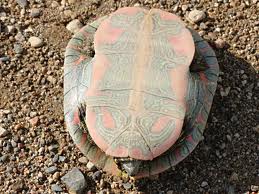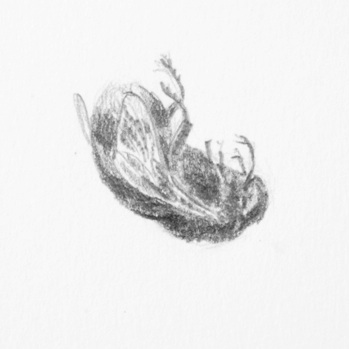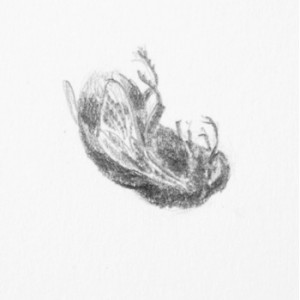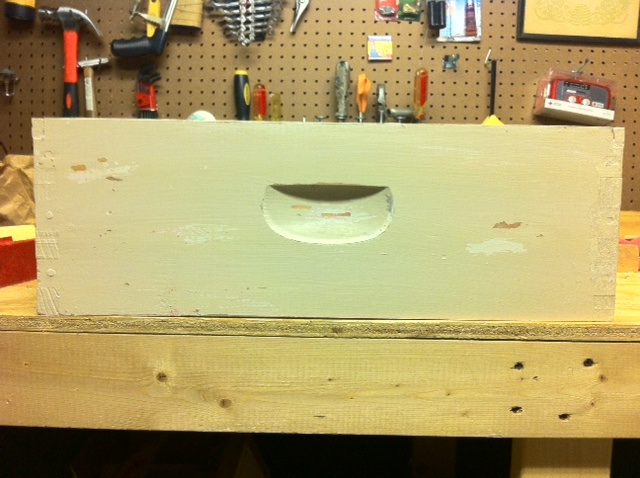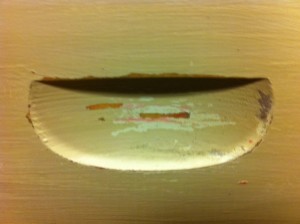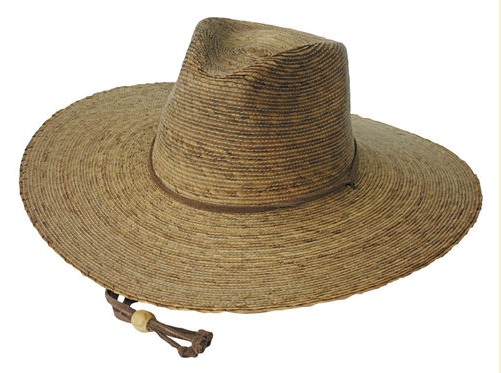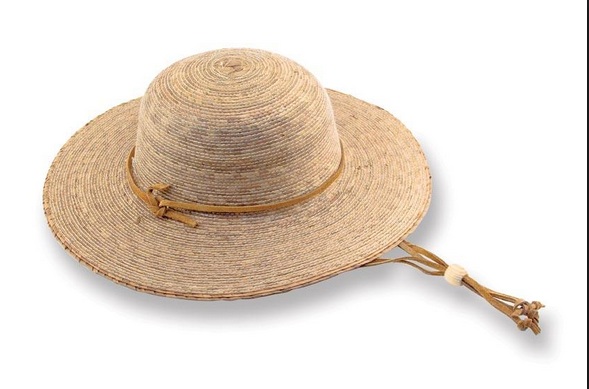Two days ago, a woman called me to say she had just witnessed a swarm moving into the roof of her porch. And lately there’s been a discussion among my Beemaster.com forum friends about how easy it is collect a swarm immediately foll0wing its move into a structure, so I decided to give it a try.
Now, let me say right up front, that it’s a LOT easier to capture a swarm BEFORE it moves into a structure. When my friends say it’s easy to trap a swarm, they mean it’s easier than cutting (which is a helluva lot of work and destructive to the home) or trapping an established hive (a process which usually takes 12-16 weeks). No matter what, setting up a trap out is sort of complicated.
So, yesterday I assembled and installed my first swarm trap out. But I think I got a few things wrong, and I need to return today to make it work better.
There are details I won’t add here because the process may bore you…but the theory is this: We want to encourage the bees to easily transition from their porch home and into a hive box. At this point, because they’ve lived in their porch cavity less than 48 hours, the colony has very little invested there…they’ve built very little comb, they have no brood, and they have very little stored honey—all of which means they will more willingly leave it.
So, before setting up the catch box, I spent some time closing off all their other entrance points by stuffing holes in the porch with insulation and calk…for a trap out, it’s important to control the bees’ point of exit and reentry. I designed a cone from #8 hardware cloth that will allow the bees to leave for foraging but will confuse them when they try to reenter. And near their old entry point, I’ve placed a very nice new home (one that some of my bees lived in over the winter…so it smells like bees), complete with open brood (from one of my other hives…the new bees will find the open brood very appealing and will want to take care of it, so they’ll choose to stay) and a few frames of honeycomb (from a recent cut out). I’ve added a few drops of lemongrass oil and swarm lure to make it smell like home.
I placed the lure box near the entrance to the bee’s new porch home, so when they return from foraging and find their old home inaccessible, they can simply wander right into their new digs.
Today I plan to move the lure box closer to their porch entrance (which I’ll have to do by suspending the hive box with ropes), and I plan to shorten the cone so the bees won’t have so far to travel out of it…we want their leaving and their choosing a new home upon their return to be easy.
It stormed all night long, and I could hardly sleep wondering how those bees were doing over there. This stuff is tough on the psyche, but it sure is good for keeping the brain exercised.
